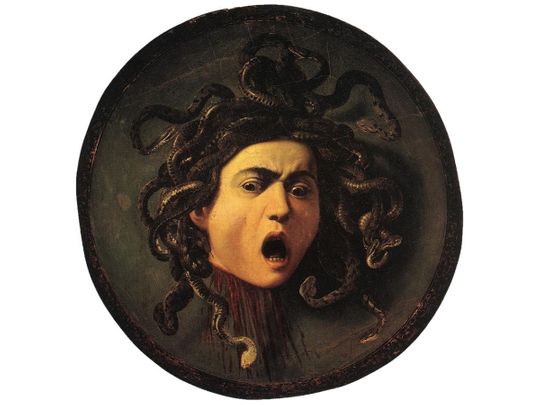
From creatures that turn victims to stone with just one look, to terrifying scorpion-men, mythical monsters show up in the folklore of several cultures around the world.
Click start to play today’s Spell It and find one such monster – an “incubus”.
Sometimes, these mythical creatures were mentioned in texts as a symbolic representation of a culture’s values, desires or fears. In other cases, they were depicted to serve some sort of purpose, like guardians or beings that laid out retribution against wrong-doers. Here are five monsters that have a deeply entrenched place in local legends:
1. Oni

In Japanese folklore, the oni are people who were once so wicked, they were transformed into evil spirits (usually after death but in some extreme cases, while they were still alive). Giant and terrifying, with red or blue skin, tusks and horns, the oni then set out to violently punish evil-doers. Powerful and bloodthirsty, they also eat anything and everything – including humans. The oni are the ultimate villains!
2. Gorgons
From ancient Greece, the Gorgons were vicious, manipulative monsters who were able to turn their victims into stone with a single look. The famous mythical character Medusa is one such Gorgon. Their distinguishing feature is that they had live snakes instead of hair, and tended to have an appearance that was both terrifying and beautiful. The moral of the story, when meeting a Gorgon, is usually to be wary of being tricked by beauty.
3. Aqrabuamelu

This scorpion-man hybrid creature originated in myths set in ancient Mesopotamia, specifically in Babylon. The Aqrabuamelu are even mentioned in the one of the earliest surviving pieces of literature, the Epic of Gilgamesh. With the body of a scorpion and the face, torso and arms of a man, these creatures were strong and powerful, and were created by the ocean deity Tiamat to wage war against her traitorous partner Apsu, and other younger deities. The Aqrabuamelu also often stood in as guardians and would warn travellers who might be in danger.
4. Blemmyae
Medieval travellers who made their way to uncharted parts of Africa and Asia often returned with tales of so-called “wild men” – and one such group was the Blemmyae. Supposedly a race of hairy and headless primitives who had a face situated somewhere on their upper body, this tribe first came up in Greek historian Herodotus’s The Histories. The Blemmyae are also mentioned in writings by Roman naturalist Pliny the Elder, reports from English statesman Walter Raleigh, and even the English bard Shakespeare’s Othello.
Which mythical monster stands out most for you? Play today’s Spell It and tell us at games@gulfnews.com.




